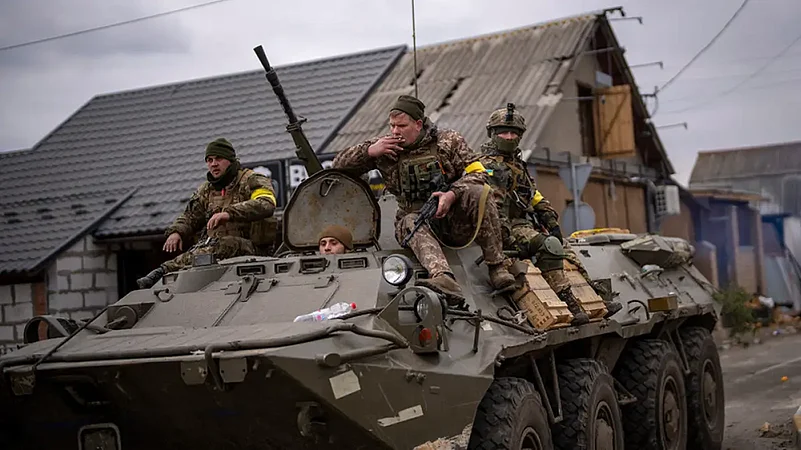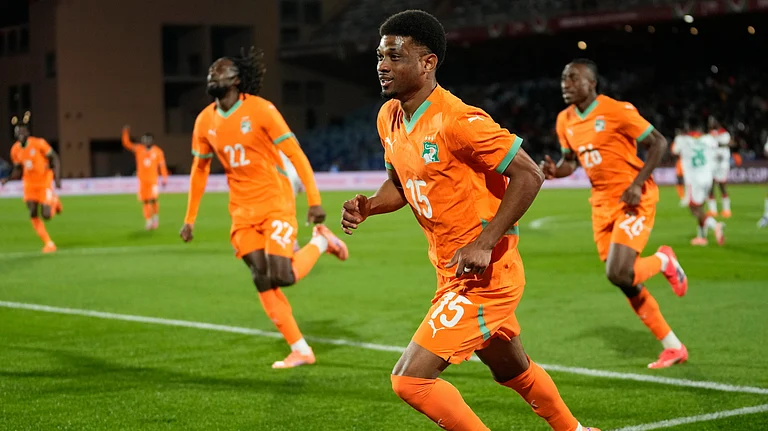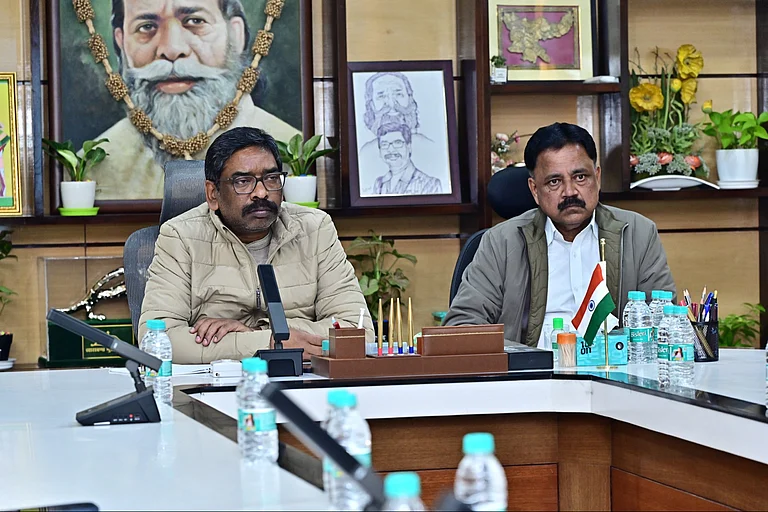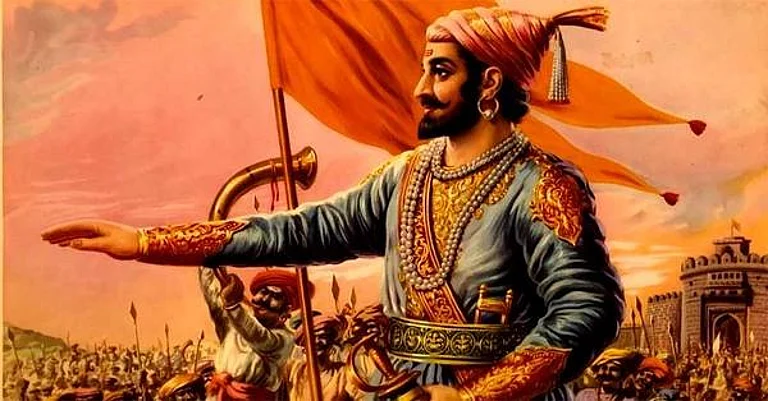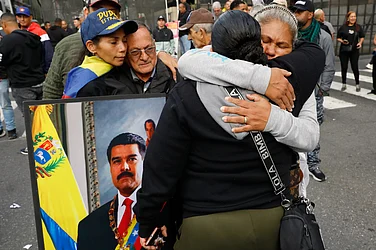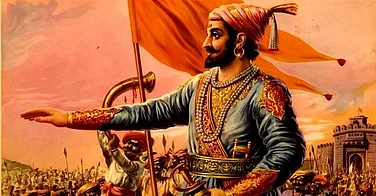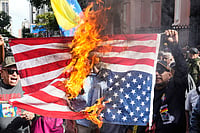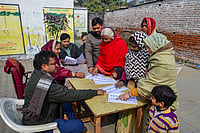Pressure is mounting on Russian President Vladimir Putin on and off the battlefield as Ukrainian forces continue with their counter-offensive in Eastern Ukraine and key partner countries publicly press him to make peace.
Ukrainian forces launched a counter-offensive this month in Eastern Ukraine and have made stunning advances, recapturing around 6,000 square kilometres of land held by Russians for months. The recaptured territory includes the country's second largest city Kharkiv and key Russian logistics hub of Izium.
The Ukrainian advances have forced the Russians to retreat from their earlier frontlines and set up defensive lines in the rear. At places, the Russian fled in haste, leaving behind heavy weapons and equipment.
However, despite reversals, Russia continues the war with long-range missile and rocket strikes, often targeting critical Ukrainian infrastructure such as power stations.
Here we explain how Ukraine has made military gains this month, how Putin is being asked to make peace by partner countries, and how Ukraine has managed to thwart Russian offensives so far.
Ukrainian counter-offensive in Eastern Ukraine
Ukraine began the counter-offensive in Eastern Ukraine in the first week of September.
For weeks before that, Ukrainian forces were pounding the Russian forces in Southern Ukraine and it appeared that a counter-offensive in the south was on the cards. With this understanding, the Russians re-deployed some of their forces and focus on the south and it was then Ukrainian forces exploited the gap in the east, making swift gains and recapturing a dozen of towns.
These captured towns include railway hub Kupiansk, Russian logistics hub Izyum, and another key town Balakliya. Kharkiv, the second-largest city in the country, was also recaptured. In all, around 6,000 square kilometres of land was recaptured.
Ukrainian forces have moved east of Oskil River, which has been a natural divider between the two sides.
"Geolocated footage confirms that Ukrainian forces established positions on the east bank of the Oskil River in Kupyansk. Russian forces will likely struggle to hold positions in eastern Kharkiv Oblast and in northern Luhansk Oblast as Ukrainian forces establish more positions on the east bank of the Oskil River," reported think tank Institute for the Study of War (ISW).
Russia has established a line of defence between Oskil river and Svatove town is believed to be preparing to defent, though their ability to do is uncertain, according to an intelligence update by the British Ministry of Defence (MoD).
It said, "Ukraine continues offensive operations in the north-east of the country while Russian forces have established a defensive line between the Oskil River and the town of Svatove. Russia likely sees maintaining control of this zone as important because it is transited by one of the few main resupply routes Russia still controls from the Belgorod region of Russia."
It added that holding this area is key to Russian objective of 'liberating' Luhansk, one of the two regions making up Eastern Ukraine's Donbas region which is the current stated objective of Russia. The other region is Dontesk.
"Russia will likely attempt to conduct a stubborn defence of this area, but it is unclear whether Russia’s front line forces have sufficient reserves or adequate morale to withstand another concerted Ukrainian assault," noted the British MoD.
Partners ask Putin to make peace
Two key partners of Russia have publicly conveyed their concerns to Russia and have urged it to make peace.
Prime Minister Narendra Modi told Putin at the Shanghai Cooperation Organisation (SCO) Summit on Friday that this is "not an era of war" and urged him to resolve the Ukraine crisis with dialogue and diplomacy.
At the same summit a day earlier, Putin acknowledged China's unspecified "questions and concerns" about the war in Ukraine while also thanking Chinese President Xi Jinping for his government's "balanced position" on the conflict.
China, Russia's main partner against the West, is also not very happy with the Russian invasion of Ukraine.
CNN reported, "It had seemed that Moscow and Beijing would be keen to present a united front at the summit to counterbalance the United States and its allies. However, signs of divisions have emerged over Russia's invasion, which has unsettled the leaders of former Soviet territories in Central Asia who are worried that Russia could encroach on their land too."
India has long relationship with Russia from Soviet-era days. A large chunk of Indian military equipment is of Soviet and Russian origin and the country therefore remains key to Indian security interests. While the West understands this, India has been under criticism for purchasing Russian oil at discounted rates throughout the war as much of West slapped sanctions on Russia.
However, Modi repeatedly urged Putin to make peace in telephonic conversations. The public comment of Modi is being seen in the West as rising frustration with the Putin's invasion.
How Russia failed against Ukraine
There are several reasons for the failure of Russia in Ukraine, ranging from poor war strategies and battle tactics to underestimating the Ukrainian and Western resolve.
Russia has suffered up to 80,000 casualties and is short of well-trained and battle-ready soldiers, which means that it is forced to push ill-equipped and ill-trained soldiers along with merceneries to the frontlines which cannot hold Ukrainian advances. Ukrainian soldiers are armed and trained by the West.
CNN reported, "Indeed, Russia's army relies now on forced mobilization and prisoners for its depleted ranks. Ukraine has been quite surgical, hitting supply routes to cut off already exhausted units, detecting which were the least prepared and manned. It's been staggeringly effective and speedy."
Russia has also suffered with poor techniques, such as frontal assaults by closely-packed tanks and armoured vehicles. Such formations have been taken out by Ukrainian drones and were key to Russian failures in the initial phase of the war when Russia was aiming to capture Ukrainian capital Kyiv.
At the onset, a synergy between various elements of the Russian offensive was lacking.
AFP reported military analysts as saying that Russia made a mistake by sending in too few ground troops in the initial phase and failing to get ground and air forces working in tandem.






